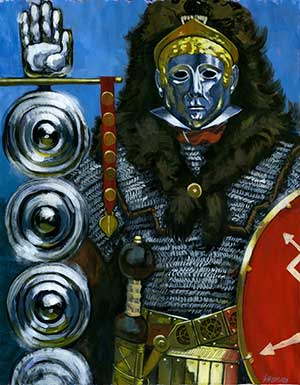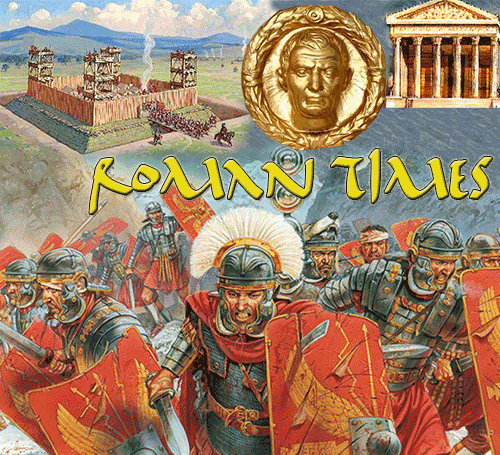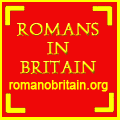RomanTimes: Basic Authenticity And Behavior Guidelines
as RomanTimes evolves, we are constantly looking for ways to improve the experience! One of the constant concerns for good reenactors is on-going complaints about non-period, out of period items, or modern items, in camp and worn by soldiers.
Members should:
- have a basic knowledge of the organization and the group that they portray, such as the structure of a Roman legion or about Celt Tribes
- strive possess the minimum required equipment in order to effectively reenact at living history immersion evetns or to interact with the public at one of those events
- provide the most accurate information possible when quizzed.
- be polite and respectful to the public at all times. Remember, we are here to educate and promote interest knowledge of about ancient Roman military and civilian life.
- be courteous and helpful to anyone hosting the legion.
- ensure encampment areas are kept clean. NO MODERN TRASH. If you see any paper wrappers or any other trash, please pick it up and place it our of site. Be sure that at the completion of the event and upon departure from the site all refuse is removed.
- behave like a Roman soldier or Roman citizen, if that is your impression.
- make sure your performance is within the realms of common sense and safety.
- ensure all equipment at the base camp is secured by at least one member when the unit is performing a public demonstration.
- be aware that children may be present during a presentation or demonstration and watch your language or description of the purpose and/or how equipment was used.
A couple of really important things!
 There are two things that can really mess up any reenacting organization: Modern Politics and Modern Religion. This sounds a bit harsh maybe, but it's true.
There are two things that can really mess up any reenacting organization: Modern Politics and Modern Religion. This sounds a bit harsh maybe, but it's true.
In today' world, the discussion of modern politics will spin right out of control, causing formally fast-friends to become bitter enemies and foes. It will wreak absolute havoc on any group (and friendship) and so... The rule: The discussion of ANY modern polititcs, unless directly related to our hobby is forbidden at RomanTimes events. Just don't do it.
Modern religion, while well-meant, has the same kind of problems and becomes a problem as most people will not believe what you believe. It's a free country, but it's not free for you to impose your beliefs on others. Respect your fellow's beliefs as you would want yours to be respected. The Rule: No discussions of modern religion and certainly, under NO circumstances, will there be ANY proselytizing. None! Discuss the religions back then — there's a lot of material there.
Weapons:
- Weapons are not to be handled by the public, under any circumstances.
- Swords and daggers will be secured at all events, excluding parades and combat demos.
- The use of the warning "Clear" will precede the drawing of weapons in the public or at any events.
- The inappropriate use of weapons will not be tolerated ("playing around with them; careless or unsafe handling, etc).
Unsafe Weapon Use:
- First Offense: Warning
- Second Offense: Removal from the individual(s) of all weapons for the duration of the event.
- Third Offense: Immediate expulsion from the event.
Non-adherence to RomanTimes standards will result in suspension for an event and/or expulsion/discharge from the organization.
Basic Authenticity Guidelines:
- Clothing and equipment for RomanTimes should be as authentic as the modern world allows, tempered by some practicality. No plastic, aluminum, rubber, etc. Our goal is to recreate Roman soldiers, Auxiliaries, Celtic warriors and civilians as authentically as practically possible.
- Equipment is to be period correct and as functional as materials and cost permit.
- All kit, including weapons and armor, should be inspected for cleanliness and serviceability. (be sure to check leather straps for weaknesses and repair as needed.)
- All clothing will be kept clean and period dress will be adhered to at all times while in the public.
- Absolutely no modern day paraphernalia is permitted (i.e., sunglasses, eyeglasses, wrist watches, piercings of any kind, eccentric hair color, inappropriate visible tattoos, etc.). Celts may use blue body paint, but designs must be historically accurate.
REMEMBER! We do have some extra equipment and tunics!!
Do not get upset if you bought a trooper helm and just found out it is unacceptable! We all started that way and understand! We will have extra gear for you onsite!
Roman Specifics:
Clothing — Linen or wool, preferably 100%, only blends that have the appearance of natural fabrics. Twills were common. Excellent Linens are available from www.fabrics-store.com .
Leather — Vegetable-tanned, top grain. Avoid splits, suede, and chrome-tanned leathers. Goatskin and calf were common. May be dyed, and should be treated with oil.
Metal — Mild steel, NOT galvanized or stainless unless the difference is not visible. Brass may be used for bronze items.
Wood — Ash is best for noncombat weapon shafts and tool handles. Plywood is acceptable for shields.
Armor and Equipment — should be a minimum of Deepeeka "N" series standard.
Helmets — all Deepeeka "N" and newer models are acceptable. Some older Deepeeka style helms are grandfathered in. No "trooper" style helms are acceptable.
Armor — Lorica Segmentatas and Lorica Hamatas are acceptable, doublers preferred for the hamata, but not required. Chain mail must be a minimum of 8mm butted, with rivetted/solid alternating 6mm preferred. Lorica Segmentatas should meet at least current Deepeeka production models.
Care of Equipment
- All steel surfaces must be rust-free and clean. A satin finish is easier to maintain than high polish. Once clean, coat the metal either with oil (3-in-1 oil, general purpose oil, etc.) or other protective coating to maintain the finish and prevent rust. It has been suggested that Roman soldiers used Lanolin (today you can purchase Anhydrous Lanolin from pharmacists) to waterproof their armor and clothing. You can make your own paste wax from a blend of beeswax and pure turpentine (as recommended by the American Historical Foundation) to coat your sword. Some reenactors resort to Vaseline when their equipment is about to be subjected to rain (but this can be messy).
- Brass must be kept corrosion free; this can be accomplished with a rubbing or polishing compound. Once clean and shining, oil, etc., can be applied to maintain the appearance.
- Leather should be treated with a light coat of neatsfoot oil to maintain water resistance and suppleness. Follow the product instructions for application.
Time Frame — Equipment for RomanTimes should be that reasonably expected to be seen in the field from AD60 to AD73.
Roman Tunics — We are aware of the arguments for and against tunic colors, the decision has been made by the event staff to follow these color schemes for RomanTimes . Please comply with the event guidelines.
- Legionaries: Should be a rust, brick or dark RED color.
- Auxiliaries: Should be Green, dark preferred. If guidance is needed or you want to know what unit to portray, the generic impression is a "Batavian" auxiliary, though others are very welcome.
- Marines: Blue, light sea foam to royal is preferred.
- Other color Roman tunics must be approved by the event (not field) staff. Cloaks should be at least 80% wool. This is a safety consideration as wool is naturally fire resistant! (and water resistant too).
Braccae — are acceptable if the weather is cold, as are closed toe military sandals.
Socks — should be at least natural wool colored knit ragg wool socks. Naalbinding preferred, though civil war era ragg wool socks are acceptable. Absolutely no white socks.
Celtic Specifics:
Clothing — Fairly complex patterns can be woven into the cloth in addition to the more simple and common, dogtooth, houndstooth, herringbone and twill weaves. You will need to ensure that modern patterned cloth is actually achievable using ancient techniques. Anything that looks like a 'clan' tartan is usually best avoided! Very bright colors can be made using ancient dyestuffs that are 'color fast' (i.e. they don't fade too badly), although it is true to say that some colors are not easily attained or fade very quickly. For that more authentic look, you could wash the life out of your tunic to get that "faded/not quite fast" look.
Color-wise, you are on safest ground with blues (although not too deep a color), yellows and browns. Natural colored linen (off-white with a yellow or pearl-grey tinge) or wool that has its natural brown or "dusty" grey colors are great.
White can be made by using the whitest wool and/or by bleaching, but is probably less practical in terms of everyday cleaning for your average Briton.
Red is a color best kept to a minimum, as the only means of producing red cloth is via dyes that are not native to the British isles. Also avoid black and scarlet. Purple is almost unobtainable beyond the trading infrastructure of the Roman world.
Celtic Armor — It is believed that the "Celts" invented mail sometime in the late first millennium BC. It proved to be so popular that it remained in use for another two thousand years, in one form or another. There have been enough fragmentary finds, and one complete set, which indicate that it was being used, although we are unsure as to exactly how common mail was among the Britons.
The find at Kirkburn, which is very much pre-Roman invasion, is thought to be a couple of hundred years, indicating that British Warriors were using what is termed the "italic" style of shoulder doubling with fastener. It is possible the shirt is Roman in origin, but given other more fragmentary finds of mail, it's equally possible it is of native manufacture. The other finds are, on average, of larger section link than the typical Roman types and often of the simpler butted construction method, which adds weight, which leads to the conclusion that mail was made locally for native consumption.
Minimum standard for mail is 8mm butted steel, with 6mm rivetted or celtic/Roman riveted solid preferred.
Celtic Helms — Generally, they must meet at least Deepeeka "N" standards. "Captured" Roman helms are acceptable.
Celtic Swords — Generally must meet at least Deepeeka standards
Tentage:
Tents — Tents that expect to be located in the fort MUST be tan, brown, or leather, generally at least a Panther Primitives Papilio standard. No white tents are allowed in the Fort. White tents are allowed in the Vicus and Celtic Homestead areas. How to stain your white tent brown: http://legvi.tripod.com/armamentarium/id310.html (Thanks to Legio VI for their great article)
Anachronisms:
Modern Containers & mdash; We have all had that "perfect" photo ruined by a plastic water bottle or coke can! With that in mind ALL MODERN ITEMS MUST BE HIDDEN at all times!! Let's repeat: ALL MODERN ITEMS MUST BE HIDDEN AT ALL TIMES!! Periodic inspections by Event and Field Staff will insure this does not occur. Drinks should be consumed in period containers. Meals should be eaten on period plates. If you must have a 12-pack in your tent, it MUST be hidden (or it may be confiscated by your Centurio)!! Plastic containers and storage boxes are the ENEMY!!! Hide them well! At the least a blanket should be thrown over them. We recommend bringing period bags for your modern clothes instead of a suitcase. The less you have to hide, the easier it is to comply! Burlap bags may hide coolers. Blankets can cover sleeping pads and bags. Modern containers for WD40, Glue, and screw top bottles should always be hidden. Empty cans, bottles, etc should be disposed of in an appropriate container, burlap bags make excellent trash receptacles. For safety's sake, food storage in plastic is fine, just keep it hidden!
Each event will have a designated "POLICE CALL" officer who will inspect for anachronisms! & nbsp; This officer gets his butt chewed if the Event staff inspector finds anachronisms, so do as he asks! Please comply in the spirit of a reenactor striving to do better. This is an EVENT STAFF rule that must be enforced by the FIELD STAFF.
It is only polite to other reenactors to hide your anachronisms as best as possible!! Please be considerate of your fellow reenactors!
NOTE: We have found that using brown or black flat spray paint makes many plastic things easier to hide! Coolers, boxes, and bright blue, silver, and green plastic things tend to disappear if spray painted brown or black! Definitely a way to make it easier on yourself to hide your modernisms!
Appearance
What did a soldier of the Roman Legions look like? We already know a bit about his uniform, armor equipment, etc. But what did the actual person inside all of this look like?
Hair — For us, it's not so bad as for reenactors of later periods — you don't have to have weird, military haircuts that will get you shunned by your wife and co-workers alike. And… you can have facial hair, but what you can't have is a bizarre modern haircut like “corn-rows” or a “mohawk” and the color, it needs to be natural — no neon blue hair please! Also, from evidence, it appears that Roman soldier's hair was shorter, rather than long, but saying this, it doesn't have to be a “buzz-cut — look at photos of Roman statues and art for this.”
Eyeglasses: This is a biggee! There weren't eyeglasses then and, as glasses are really noticeable and detract greatly from the impression we are trying so hard to do, we don't really allow them. More so, eyeglasses ruin the feeling of “being there” for everyone else. And really, there are only a couple of viable choices for those who must wear corrective lenses — wear contacts, get something like RK Lazik surgery or go without your corrective lenses. But note, if you are going without your prescription eyewear, make sure that the unit commander and others in the unit know — this is for your safety, as well as that of everyone else at the event.
Fact of life, some folks have to have them. These are allowed with the caveat that they be removed as often as possible for photos, etc. Persons with glasses should strive to hide them as much as possible and avoid being in photos with them on.
Tattoos — Perhaps some kinds of tattoos might be acceptable, but if you have modern-style tattoos, you will need to figure out a way to cover them up — either with clothing, “cover-up” makeup or something. No visible USMC or Harley Davidson tattoos please. Okay... we might give you “points” if you get an SPQR tattoo
Weight — We might not all be spring chickens and models for some fitness magazine — but no one will tell you can't reenact! Just remember, you're the one who will have to carry your gear, while wearing armor, marching, fighting and standing in the hot sun. Without nagging, being in better shape is something we should all strive for.
Age — Older soldiers are allowed! Ancient periods is a lot more forgiving here — certainly, we don't all need to be 19 years old ;-) There are also plenty of things to do once you get too old to portray a soldier… civilians such as a merchant come to mind.
Chewing Gum/Tobacco and smoking at events — NO! just NO — don't do it!
And last, please don't whine about the “Americans with Disabilities Act”… this is reenacting (not a Renaissance Faire) — we are trying to do it right, so again, the point is not to allow everybody to play or to make them “happy-happy, joy-joy” — it's to do it right.












